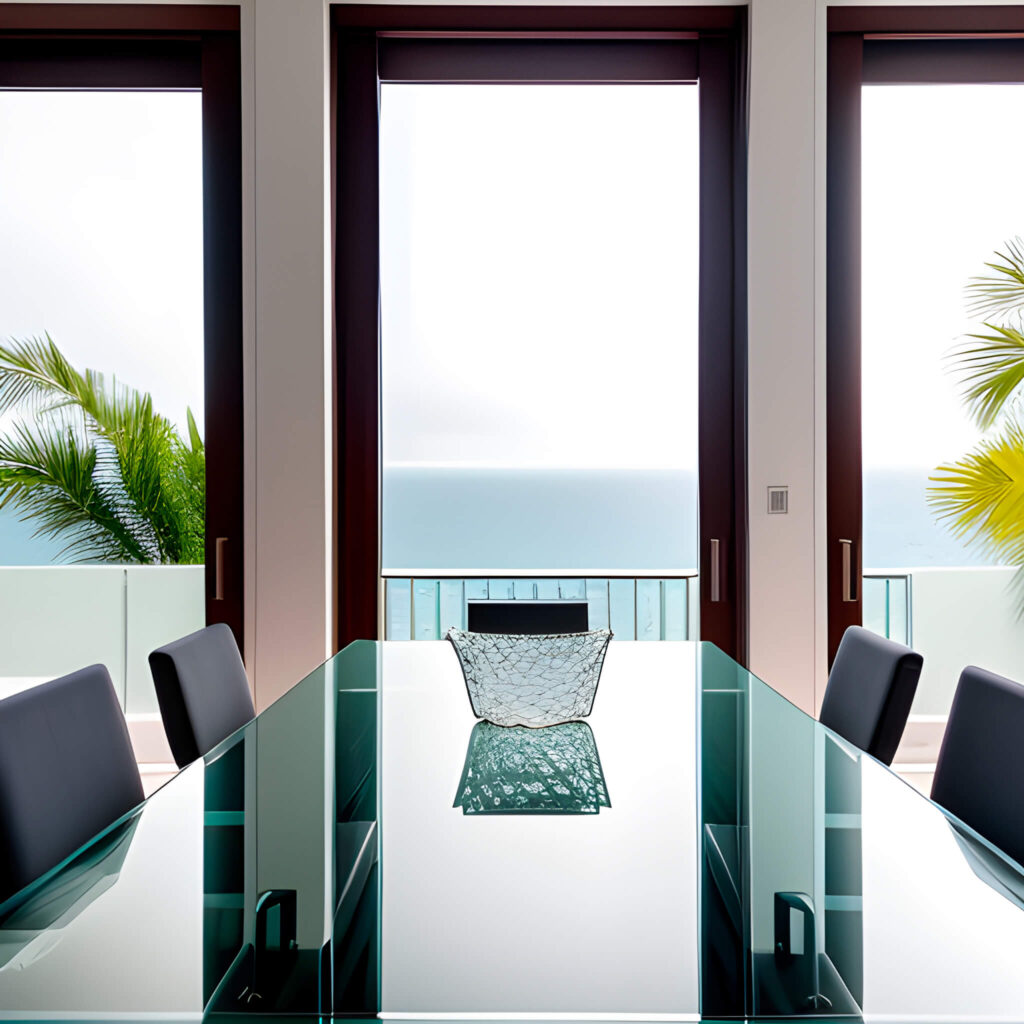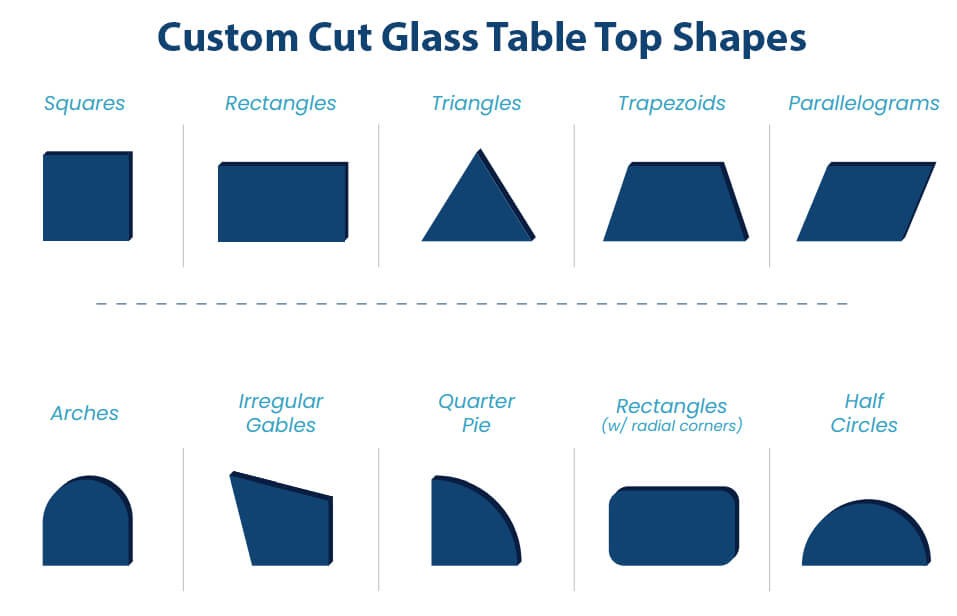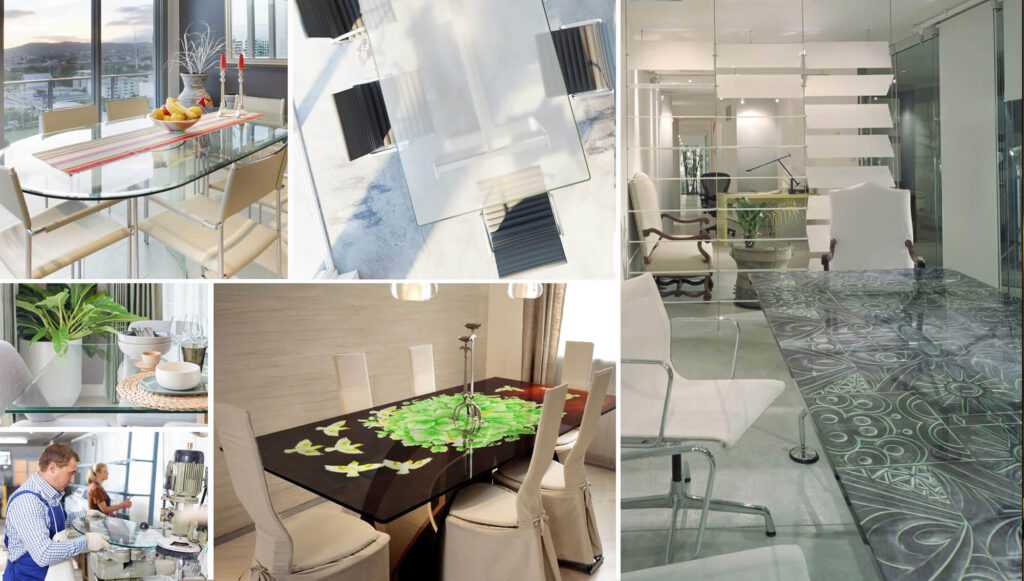Glass table tops have become increasingly popular in modern interior design due to their sleek appearance and the sense of space they bring to any room. Whether you’re replacing an old table top or embarking on a DIY project, understanding the costs involved in cutting a glass table top is crucial. The price can vary significantly depending on several factors: the size, thickness, shape, type of glass, and any additional customization.

Size and Thickness: Key Cost Factors
The first and most obvious factors affecting the cost are the size and thickness of the glass. Larger and thicker glass pieces require more material and often more intricate cutting processes, which can drive up the price. For instance, a small, thin piece of glass for a side table will be much less expensive than a large, thick piece for a dining table. The thicker the glass, the more durable and heavier it is, which also adds to the shipping and handling costs if you’re not picking it up in person.
Shape and Edging: Complexity Adds Up
The shape of your table top can also significantly impact the cost. Standard shapes like circles, rectangles, and squares are generally less expensive to cut compared to custom shapes with curves or intricate designs. Custom shapes require more time and skill to cut, which translates to a higher cost.
Moreover, the type of edge finishing you choose affects the price. A basic seamed edge (where the edges are sanded to remove sharpness) is generally included in the basic cost. However, if you desire a more polished look, such as a beveled or pencil edge, expect to pay more. These finishes involve additional steps in the cutting and polishing process. See more options on this page about custom glass table production.

Type of Glass: Tempered vs. Laminated
When it comes to the type of glass, the two most common options are tempered and laminated glass. Tempered glass, also known as safety glass, is heat-treated to be stronger and break into small, blunt pieces if shattered. It’s a popular choice for its safety features, especially in households with children or pets. However, it is more expensive than standard glass because of the additional processing it requires.
Laminated glass consists of two glass sheets with an interlayer of film. It’s known for its sound reduction and UV protection properties. Like tempered glass, laminated glass is more expensive than regular glass due to its complex manufacturing process.
Color and Clarity: The Aesthetic Choices
The color and clarity of the glass also play a role in the cost. Standard glass has a slight greenish tint, which is more noticeable in thicker pieces. This tint is due to the iron content in the glass. If you prefer a more crystal-clear appearance, you might opt for low-iron glass, which has reduced iron content to minimize the green tint. This type of glass, often referred to as “water-white” or “crystal clear,” is more expensive due to its higher production costs.
Customization: Tailored to Your Needs
Customization options such as UV coating, frosting, or etching will also increase the price. These features, while enhancing the aesthetics and functionality of the glass, require additional labor and materials.

The Final Price: Balancing Budget and Quality
So, how much can you expect to pay for a cut glass table top? Prices can range from as low as $50 for a small, basic piece to several hundred dollars for larger, thicker, and more customized pieces. For a standard-sized dining table, you might pay anywhere between $200 and $500, depending on the factors mentioned above.
Conclusion: Perfect Fit for a Perfect Look
When budgeting for your glass table top, it’s essential to consider the long-term value it brings to your space. While customization options might increase the upfront cost, they often result in a product that perfectly fits your aesthetic and functional needs. It’s a balance between cost and quality, and the perfect fit is indeed worth it.
In summary, the cost of cutting a glass table top is influenced by a variety of factors, including size, thickness, shape, type of glass, and any additional customization. By understanding these elements, you can make an informed decision that aligns with both your design vision and budget. Remember, a well-chosen glass table top can be a stunning centerpiece in your home for years to come.